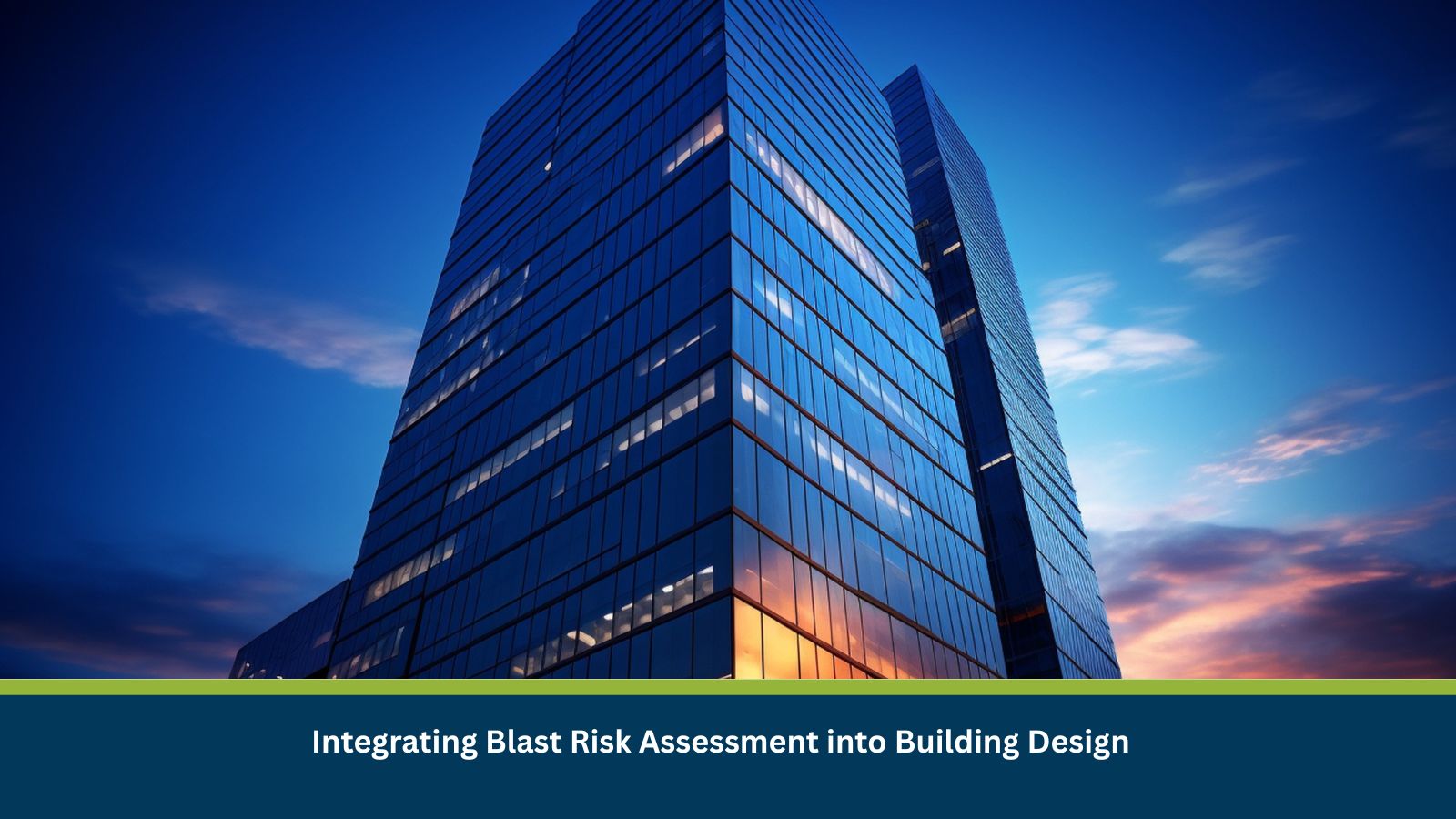Designing for Safety in an Uncertain World
As urban skylines expand and critical assets cluster closer together, the risk landscape for buildings has evolved. Explosions whether accidental, industrial, or deliberate pose some of the most severe yet preventable threats to life, infrastructure, and business continuity.
From industrial gas leaks to terrorist vehicle-borne improvised explosive devices (VBIEDs), blast events can devastate structures far beyond their immediate impact zones. According to the World Economic Forum’s Global Risks Report 2025, urban concentration and infrastructure interdependence are amplifying the physical and systemic consequences of such shocks.
Modern Building Design must therefore go beyond aesthetics and efficiency- it must embody Protective Architecture, integrating Blast Risk mitigation into its very foundations.
Understanding Blast Risk: Beyond the Obvious
Blast Risk refers to the probability and potential impact of an explosion on people, assets, and operations. It encompasses both intentional acts (terrorism, sabotage) and accidental events (chemical releases, industrial fires).
Three broad categories are relevant for design professionals:
- External threats: VBIEDs, perimeter explosives, nearby industrial accidents.
- Internal threats: Process-related explosions, gas leaks, equipment malfunctions.
- Secondary hazards: Flying debris, glass fragmentation, and progressive collapse.
Unlike most hazards, blast loads are instantaneous and extreme, making Physical Security Engineering essential from the earliest design phase.
The Intersection of Architecture, Engineering, and Security
Traditional architecture prioritised form and function; Protective Architecture adds a third-dimension resilience. By embedding blast considerations into Building Design, architects and engineers can ensure that the structure not only looks robust but behaves robustly under stress.
This multidisciplinary approach draws on:
- Security intelligence: Threat profiling, standoff modelling, and site vulnerability assessments.
- Structural design principles: Load-path redundancy, ductility, and blast wave dispersion.
- Operational planning: Evacuation flow, emergency response, and security zoning.
This requires close collaboration between architects, engineers, and security consultants who understand both the art of design and the science of risk.
Blast Risk Assessment informs design parameters such as structural spacing, material choice, and load path redundancy effectively turning design drawings into defensive frameworks.
5 Key Principles for Integrating Blast Safety into Design
- Standoff Distance
The most effective mitigation strategy is distance. Increasing the separation between potential threat locations (e.g., public roads or vehicle checkpoints) and the building envelope exponentially reduces blast impact. FEMA 427 recommends a minimum 30 m standoff for high-risk assets, where feasible.
- Structural Redundancy
Buildings should have multiple load paths so that if one structural component fails, the rest can redistribute forces without collapse. Redundancy also supports progressive collapse resistance, a key feature in Critical Infrastructure Protection.
- Material Selection
Use materials with high ductility and energy absorption properties such as reinforced concrete, steel framing, and laminated glass. Avoid brittle materials that shatter or splinter under high strain rates.
- Façade and Glazing Design
Façades often represent the weakest link in blast events. Blast-resistant glazing, anti-shatter films, and anchoring systems can reduce injuries and secondary damage from glass debris.
- Progressive Collapse Prevention
Integrate tie forces, shear walls, and moment-resisting frames to contain local failures. This ensures that an isolated blast or local failure does not trigger total structural collapse.
Case Insight: Designing for Resilience
A leading data centre operator in South Asia partnered with security engineers to conduct a blast risk assessment during the concept design phase of a Tier IV facility.
Using standoff analysis, fragment trajectory modelling, and site vulnerability mapping, the design team integrated:
- Reinforced façades facing access roads
- Blast-rated entry barriers and vehicle setbacks
- Separated mechanical spaces with vented walls to relieve overpressure
- Secure perimeters integrated with passive landscaping features
This approach not only enhanced Structural Resilience but also reduced long-term insurance premiums and improved investor confidence proving that risk-informed design is as much a business enabler as a safety measure.
The Role of Technology and Intelligence Platforms
Predictive tools like Datasurfr are revolutionising the way architects and risk teams approach Blast Risk.
By fusing open-source threat intelligence with geospatial analytics, such platforms can:
- Map historical incidents near project sites
- Model threat likelihood based on urban density and security posture
- Provide real-time alerts for security escalations
- Integrate directly with design simulations for adaptive mitigation planning
These insights empower architects and security consultants to adopt Risk-Informed Design, ensuring safety by design not by retrofit.
Conclusion: Architecture as the First Line of Defence
In an unpredictable threat landscape, Building Design becomes the first and most visible line of defence. Integrating Blast Risk into the design process ensures that buildings can withstand not only the pressures of aesthetics and efficiency, but also those of real-world hazards. The future of Protective Architecture lies in collaboration where architects, engineers, and risk specialists co-create spaces that are not just beautiful and functional, but resilient by intent.
Your Security Partner
MitKat’s Datasurfr platform delivers real-time, AI-powered risk intelligence, filtered and contextualised by expert analysts to support proactive decision-making. Paired with our Protective Services, we turn intelligence into action, safeguarding your leadership wherever they operate. Collaborate with MitKat to build true business resilience. From Risk Consulting and Security Design to Cyber Security and Protective Services, our integrated solutions help organisations navigate today’s complex threat landscape and build robust, future-ready risk management frameworks.






